Plus500 (Forex/CFD) — Scam or Not? Full Breakdown: Licenses, Terms, Trader Reviews (2025)
Plus500 is one of the most recognizable brokers for online CFD trading on currencies, stocks, cryptocurrencies, and other assets. The company was founded back in 2008 by Technion graduates in Israel, and today its shares trade on the London Stock Exchange (LSE listing) and it is a constituent of the FTSE 250 index. That signals transparency and oversight by top‑tier financial regulators. So why is Plus500 talked about so much? A simple platform, hundreds of thousands of traders worldwide, and the natural question—“Plus500: scam or legit?” In this review, as a trader with 11 years of experience, I’ll examine every aspect candidly: from regulation and trading conditions to real customer feedback. You’ll see where Plus500 is strong, where it’s weak, who it suits, and when it makes sense to consider an alternative.
Contents
- Who is the broker Plus500?
- Pros and cons of Plus500
- Plus500 company overview
- Regulation and reliability
- Account types and trading conditions
- Fees and spreads
- Deposits and withdrawals
- Plus500 trading platform
- Tradable instruments
- Special Plus500 features
- Getting started (registration & verification)
- Customer support
- Education and analytics for traders
- User reviews and reputation
- Comparing Plus500 with Pepperstone, FXPro, and Exness
- Who is Plus500 for? Who will like it—and who won’t
- Plus500 FAQ
- Conclusion
Who is the broker Plus500?
Plus500 is a global CFD broker and fintech company offering access to multiple financial markets through its own trading platform. Founded in 2008 in Israel by a group of Technion graduates, it has grown into one of the industry leaders. The headquarters is now in London, with offices and entities across Europe, Asia, Australia, and other regions. The broker serves clients from dozens of countries (the site supports 30+ languages) and claims over 30 million registered traders. That’s notable scale.
Status and reputation: Plus500 is a public company whose shares trade under the ticker PLUS on the LSE main market. That imposes strict financial reporting and transparency requirements. Investors can review annual reports; for example, Plus500’s 2024 revenue was $768 million with net profit of $273 million. Zero net debt and consistent profitability point to financial resilience. The company is also regulated by several respected authorities (details below), adding another layer of client protection.
Why do traders look at Plus500? The main reason is simplicity and ease of use. Plus500’s platform is known for its intuitive interface: placing a trade or setting a stop‑loss is straightforward, unlike more cluttered terminals such as MetaTrader. Beginners like the ability to start with a small deposit ($100) and practice on a free demo account. There’s also a broad product range: you can trade everything from FX pairs to Tesla stock and oil from one account. The broker advertises actively and sponsors well‑known sports clubs (the Plus500 logo once appeared on Atlético Madrid shirts; now there’s a partnership with the Chicago Bulls, among others). Brand visibility fuels curiosity too.
Of course, there’s skepticism. Online you’ll find “Is Plus500 a scam?”—especially from newcomers who see a simple platform and marketing promises. From my own experience: Plus500 is not a bucket shop or a fraud; it’s a licensed broker. But don’t expect miracles—lack of market knowledge and the pursuit of quick gains can lead to losses, as the stats above suggest. I frequently see the same beginner mistakes. The broker provides tools; your outcome depends on how wisely you use them.
Let’s move to a detailed analysis of the platform’s strengths and weaknesses so you can decide whether it deserves your funds.
Pros and cons of Plus500
Like any broker, Plus500 has strong points and drawbacks. Over years of trading I’ve identified key advantages, but also limitations that can be critical for certain traders. Here’s a straightforward take.
Main advantages of Plus500:
- Simple, user‑friendly platform. The WebTrader interface is intuitive and localized into many languages. Even a beginner can get up to speed. No complex terminals—trade right from your browser or mobile app.
- No deal commissions. The broker doesn’t charge to open/close positions—its revenue comes from the spread. There are also no deposit/withdrawal fees on the broker’s side (Plus500 absorbs payment‑processor costs). You save on costs, especially if you trade frequently.
- Wide instrument selection. Plus500 offers over 2,800 markets: forex, stocks, stock indices, commodities, cryptocurrencies, ETFs, and even options as CFDs. You can diversify and explore different markets without changing broker.
- Reliable regulation and fund protection. The broker is licensed by top regulators (UK, EU, Australia, etc.), keeps client money on segregated accounts, and provides negative balance protection. Public‑company status adds confidence.
- Low entry threshold and demo. The minimum deposit is just $100, enabling a start without large capital. The free, unlimited demo account lets you practice and refine strategies as long as you need.
- Fast, reliable payouts. Trader feedback suggests withdrawals are processed within 1–3 days, reaching cards or e‑wallets without “hidden” fees or rates. I tested a withdrawal myself—funds arrived on time and in full.
Key disadvantages of Plus500:
- No MetaTrader or automated advisors. The broker uses only its proprietary platform. MT4/MT5 and other third‑party terminals aren’t supported. You can’t connect trading robots (algos) or external scripts—manual trading only.
- Constraints for scalping and algo trading. Plus500 discourages ultra‑short‑term trades: per the terms, orders held less than ~2 minutes may be treated as a violation. HFT and latency‑arbitrage tactics are disallowed. For active scalpers, that’s a serious minus.
- Inactivity fee. If you don’t log in for over 3 months, the broker charges $10 monthly. The fee doesn’t apply while you’re using the account, but it’s easy to forget.
- Limited education and research. Plus500 offers basic help articles and a few videos. There’s minimal in‑depth research (daily chart commentary, trading ideas). Advanced traders may miss richer market analysis.
- No social features or invest services. There’s no copy‑trading, PAMM, or trader social network. You can’t auto‑copy strategies like on eToro—only trade on your own. Nor can you buy real stocks long‑term (except via separate Plus500 Invest, which isn’t available everywhere).
- Limited terminal customization. You can’t add custom indicators or tailor the interface as flexibly as in pro terminals. While core analysis tools exist, “advanced” technical analysis with bespoke tools may be lacking.
Overall, Plus500 targets straightforward, moderately active trading without complex extras. For beginners, the pros clearly outweigh the cons—ease of use and zero commissions matter most. Power users may feel constrained for algorithmic work or deep research. Next, we’ll unpack each area so you get the full picture.
Plus500 company overview
Let’s look at the broker’s background. Plus500 launched in 2008 as a small fintech startup in Haifa (Israel). The founders aimed to make market trading accessible to a broader audience and released the first desktop version of Plus500. The “simple trading” idea resonated: within a few years the company expanded globally.
History and growth. In the 2010s, Plus500 ramped up client acquisition via online ads and an affiliate program. Subsidiaries opened in different regions: Plus500UK Ltd (London), Plus500AU Pty (Sydney), Plus500CY Ltd (Cyprus), and more. In 2013, the company listed for the first time—shares began trading on AIM at the LSE at about a $200M valuation. Later, in 2018, Plus500 moved to the LSE main market and officially joined the FTSE 250 mid‑cap index. That’s a milestone: the broker stood alongside established financial names and surpassed $1B in market cap.
Geographic reach. Today Plus500’s services are available across Europe, the UK, Australia, New Zealand, Asia, the Middle East, Africa, and other regions. The company serves clients via locally licensed entities. For instance, European clients are handled by Plus500CY (passporting across the EU), UK clients by Plus500UK, Australian clients by Plus500AU, etc. The footprint is broad—50+ countries and clients worldwide. Notably, retail CFD trading is banned in the U.S., so Plus500 was initially unavailable there. In 2021 the broker entered the American market differently: through acquiring a futures broker and launching Plus500 Futures for futures trading (for pros). Thus, Plus500 now has a U.S. presence, albeit in a different segment.
Regional restrictions: due to international sanctions and local rules, Plus500 isn’t available to residents of Russia and some other countries. After 2022, the company paused service for Russian residents, like many Western brokers. This matters—official registration from Russia isn’t possible (workarounds like VPNs and foreign accounts fall outside this article). For other CIS traders (Ukraine, Kazakhstan, etc.), Plus500 is accessible via its European subsidiary.
Public company and financial strength. Being listed requires Plus500 to disclose financials. Reports show solid capital buffers and no problematic debt. In 2020 (pandemic year) Plus500 posted record profit amid a surge in trading activity. The broker pays dividends regularly. For clients that’s a positive signal: a financially healthy company with a safety cushion is less prone to mishandling client funds. Regulators also require client money to be segregated and capital levels maintained—Plus500 complies.
Sponsorships and brand visibility. Plus500 invests in sponsoring popular sports teams. From 2015 to 2021 it was the title sponsor of Atlético Madrid. After Spain, the company shifted to other markets: today Plus500 supports the Chicago Bulls (NBA), Atalanta BC (Italy), Legia Warsaw (Poland), and BSC Young Boys (Switzerland). In Australia it previously sponsored the Brumbies rugby team. Such partnerships require significant budgets and vetting by leagues and associations—another signal of credibility. Questionable “bucket shops” rarely pass those checks.
Bottom line: Plus500 is a mature, reputable player in online trading. With 15+ years in business, millions of clients, public status, and multi‑jurisdiction regulation, it looks dependable. The story hasn’t been free of hiccups—more on that below—but peers and independent reviewers generally rate Plus500 highly for trust. Next we’ll look closer at regulation.
Regulation and reliability
Broker reliability is a core concern. Here, Plus500 can point to a strong set of licenses and client‑protection measures.
Regulators and licenses. The Plus500 brand operates via several legal entities, each regulated in its home jurisdiction:
- United Kingdom: Plus500UK Ltd — FCA license (Financial Conduct Authority, No. 509909). The FCA is one of the world’s strictest regulators. UK clients (and some EU clients prior to Brexit) were covered by this license.
- Cyprus (EU): Plus500CY Ltd — CySEC license (Cyprus Securities and Exchange Commission, No. 250/14). Enables EU‑wide passporting. Post‑Brexit, the Cyprus entity covers continental Europe.
- Australia: Plus500AU Pty Ltd — ASIC license (Australian Securities and Investments Commission, AFSL No. 417727). Covers Australia and, under arrangements, New Zealand (with the local FMA).
- Singapore: MAS license (Monetary Authority of Singapore) for Plus500SG Pte. Singapore is a major Asian hub and the local license reflects high standards.
- Seychelles: Plus500SEY Ltd — FSA Seychelles license (SD039). Used for clients in certain countries not covered above (the “offshore” segment). While the FSA is less strict than the FCA/ASIC, this license allows offering higher leverage (up to 1:300) on riskier markets.
- South Africa: FSCA license (Financial Sector Conduct Authority, No. 47546) for operating in South Africa.
- UAE: in 2022 Plus500 obtained authorization from the Abu Dhabi Global Market (ADGM) regulator and opened a UAE branch, expanding in the Middle East.
- Estonia: EFSA license (No. 4.1-1/18) in Estonia—likely for servicing Baltic or Eastern European clients.
- USA: via Plus500US (Cunningham LLC), the broker is registered as a Futures Commission Merchant, member of the NFA and overseen by the CFTC (futures market regulators in the U.S.). This is futures, not CFDs.
In short, Plus500 is regulated on five continents, including top‑tier jurisdictions (UK, Australia, Singapore, the EU). For traders, this means oversight and avenues for redress. For example, UK clients may turn to the Financial Ombudsman and FSCS; EU clients to Cyprus’s Investor Compensation Fund (ICF); Australians to the AFCA, etc.
Client‑fund protection. Standard safeguards apply: segregated accounts (client money held apart from company funds in reputable banks) and negative balance protection for retail clients (you can’t go below zero—positions are closed before a debt arises). In the EU and UK this is required by regulation and provided by Plus500. If the company were to fail, UK‑jurisdiction clients may be eligible for up to £85,000 from the FSCS, and under Cyprus jurisdiction up to €20,000 via the ICF. While a large broker’s failure is unlikely, the “safety net” is reassuring.
Reputation and incidents. Over a long history, Plus500 hasn’t been linked to outright fraud. There were a couple of regulatory hiccups:
- In 2015, the UK FCA unexpectedly froze thousands of Plus500UK accounts and required re‑verification. The firm had often performed KYC at withdrawal rather than at account opening, conflicting with AML procedures. Trading was temporarily paused for many clients, and the stock price fell. This caused frustration—people couldn’t withdraw for weeks. To be clear, funds weren’t missing; it was a compliance issue. The broker implemented the fixes, re‑verified accounts, and by early 2016 UK operations normalized. Since then Plus500 has enforced stricter KYC from the start.
- In 2018, a class action was filed in Israel by a client alleging unfair order execution during the Brexit referendum. He claimed his account was frozen during extreme volatility, preventing a profitable exit. The Tel Aviv court accepted the case. Such proceedings can take years. Importantly, it involved an exceptional market event—many brokers limited trading amid unprecedented uncertainty. No systemic “scam” was established; it’s more an operational dispute.
There’ve been no major scandals beyond that. Regulators (FCA, CySEC, etc.) haven’t accused Plus500 of price manipulation or withholding funds. Minor fines for reporting delays or internal compliance issues do occur in the industry, but nothing extraordinary here. In CFD circles, Plus500’s trust profile is strong—reliability ratings are usually high.
Can you trust Plus500? Evidence suggests yes. It’s among the most regulated CFD providers—fully legal and accountable. It has stood the test of time, market crises, and supervisory scrutiny. Client money protections are in place. As always, use common sense: avoid concentrating too much capital in one place (diversify across banks/brokers) and read the client agreement carefully. Compared with obscure offshore shops, Plus500 looks like a safer harbor. Competitors and independent reviews generally agree it’s among the industry’s trust leaders. It’s a sensible choice if safety and oversight matter to you.
Account types and trading conditions
Here’s what accounts and terms Plus500 offers.
Account types. It’s simple: essentially one live Standard account for retail traders plus a separate category for professionals. There aren’t multiple pricing tiers—retail clients share the same spreads, instruments, and features. You can apply for Professional status (if you meet criteria such as portfolio size and trading experience); that lifts some regulatory limits (e.g., higher leverage) but reduces retail protections. There are no official VIP accounts with personal managers/cashback—very active clients might get occasional perks, but nothing in the public offer.
Demo account. Plus500 provides a free demo for learning and platform familiarization. It opens automatically at sign‑up—switch to Demo mode after creating your account to get a virtual balance (often $40,000, top‑up on request). There’s no time limit: practice for months while you study. Quotes are live, and functionality mirrors the real account. I always advise beginners to trade on demo first, get a feel for the platform, and test strategies before risking money.
Account base currency. You can open accounts in different currencies. Common options are USD, EUR, GBP, AUD, JPY, CHF, and others. In total, roughly 10–15 base currencies are supported (the list varies by region; in the EU you’ll see euros, pounds, zloty, etc.). RUB isn’t offered as a base currency, so most CIS traders choose USD or EUR. If your card/wallet uses another currency, deposits/withdrawals will be converted (by your bank or payment service). Inside the platform, P/L conversion is typically around 0.7% when the instrument’s currency differs from the account currency. Choose your base currency thoughtfully to minimize friction.
Minimum deposit. You can start with $100 (or equivalent). That’s a low bar—many large brokers require $500+. With Plus500, $100 is enough to open an account and place trades (naturally, with small sizes). Some payment methods allow even lower minimums—e.g., $50 via certain e‑wallets. For comfort, I’d suggest $200–300; otherwise you’ll be limited to micropositions.
Leverage. Leverage is provided within regulator‑imposed limits. For EU/UK retail clients (ESMA rules), the maximum is 1:30 for major FX, 1:20 for oil, gold, and major indices, 1:10 for other commodities and minors, 1:5 for stock/ETF CFDs, and 1:2 for crypto. These caps are meant to protect newer traders from outsized risk. For instance, 1:30 means that with $100 on the account, you can control a $3,000 position—the multiplier boosts both gains and losses.
Professional clients or those under offshore entities (Seychelles) may access higher leverage: up to 1:300 on FX, 1:100 on indices, 1:20 on stocks, and 1:20 or more on some crypto indices. High leverage is a double‑edged sword—powerful in skilled hands, but it magnifies mistakes. For most, standard retail caps are sensible.
Leverage example: with a 1:30 cap, opening 0.01 lot EUR/USD (~€1,000 notionally) requires about €33 margin. Without leverage, it would be €1,000. Margin requirements at Plus500 are modest—you can trade with a few hundred dollars by opening micropositions.
Margin call and stop‑out. Plus500 monitors equity vs. required margin. If losses approach a critical level, the platform will request funds (margin call) or ask you to reduce positions. The forced‑closure threshold (Stop Out) is 50% of required margin on open trades (as per EU rules). When free equity falls to half the margin, the broker begins closing losing positions to prevent a negative balance. In practice, Plus500 shows a margin percentage and warns if it drops to dangerous levels (e.g., 100%—already concerning; 50%—liquidation risk). Alerts may arrive via email/SMS. Beginners often ignore these signals and don’t top up, losing positions at stop‑out. Always monitor your margin!
Bottom line on accounts: getting started with Plus500 is easy—registration and minimum funding are light, account types are few, terms are uniform. The demo is a real advantage for risk‑free onboarding. Leverage here is “moderate‑standard”: enough to scale, not extreme (at least for EU users). Plus500 emphasizes simplicity and consistency—no tricky tariffs, clear terms. For most retail traders that’s sufficient. If you need specialized conditions (e.g., raw‑spread ECN with per‑lot commissions and direct interbank liquidity), Plus500 isn’t that model; it’s a market‑maker. Still, the standard Plus500 account suits the majority.
Fees and spreads
What does trading via Plus500 cost? The broker positions itself as “commission‑free,” which is broadly accurate: there’s no fee per trade—entry/exit costs are in the spread (the bid‑ask difference).
Spreads. Plus500 quotes floating spreads that adjust to market conditions. In calm periods they narrow; during volatility they widen. The broker publishes typical spreads for key instruments. Examples of average spreads on the platform:
- EUR/USD: about 1.2 pips (0.00012)—competitive for the retail segment.
- GBP/USD: around 1.8 pips.
- EUR/GBP: roughly 1.5 pips.
- AUD/USD: ~1.1 pips.
- USD/JPY: ~2.0 pips.
For major FX pairs, spreads are generally 1–2 pips—reasonable (many market‑makers are similar). I’ve even seen EUR/USD at 0.6 pips in quiet conditions.
Other asset classes quote spreads in the instrument’s price units:
- Stocks: a few cents or a fraction of a percent. For Apple CFDs, I’ve seen about $0.3 (at ~$150, ~0.2%). Less liquid names can be 0.5–1%.
- Indices: for S&P 500 (USA 500) the typical spread is ~0.6 points; Nasdaq 100 ~1.5; FTSE 100 ~1. That’s tight. DAX (Germany 40) is about 2 points.
- Commodities: Gold (XAU/USD) ~ $0.5 spread (~0.02%). Oil (Brent, Crude) ~ $0.04–0.05. Silver ~ 3 cents.
- Cryptocurrencies: wider in relative terms. Bitcoin CFD spread is around 0.75% of price; Ethereum ~1–2%. That’s higher than on spot crypto exchanges, but normal for leveraged CFDs. No extra commission besides the spread.
Overall, Plus500’s spreads are moderate. Not rock‑bottom (don’t expect 0.1‑pip interbank), but far from punitive. For day‑trading smaller sizes, they’re acceptable. Compared with eToro or Capital.com, levels are broadly similar. Stock spreads can be a touch wider than brokers with direct exchange access, but Plus500 doesn’t add a per‑trade fee. The spread is shown in the instrument info (click “i” in the platform), so you can price it in before trading.
Trade commission: $0. As noted, Plus500 doesn’t charge per‑order commissions. If you buy Apple stock CFDs for $1,000, you only pay the spread (maybe $2–3 between bid/ask). Some brokers charge, say, 0.1% of notional—in Plus500 that’s $0.
Overnight funding (swaps). Holding positions overnight incurs funding (could be negative or, rarely, positive depending on rates). In today’s market it’s usually a cost for traders. For FX, swaps reflect interest‑rate differentials. For crypto, funding is typically high—often 0.1–0.3% per day. The broker doesn’t list all funding rates publicly; they’re shown per instrument in‑platform (daily % for long and short). CFDs aren’t designed for long‑term holding—swaps can erode gains if you hold for weeks or months. Example: a BTC long might show −0.20%/day—~6% per month, ~70% per year. Crypto‑CFDs suit short‑term speculation; they’re not for “HODL.”
Inactivity fee. Perhaps the most debated charge at Plus500. If you don’t log in for 3 months, a $10 monthly fee applies until you log in again or the balance is zero. The broker frames this as maintaining “dormant” accounts. It’s easy to avoid—just sign in occasionally. To be safe, if you won’t trade for a while, close positions and withdraw—then the account sits at zero and no fee accrues. Or set a monthly reminder to log in.
Deposit/withdrawal fees: none on the broker’s side. You can deposit $1,000 and withdraw $1,000—Plus500 pays out the full amount (subject to trading results). Your bank/payment provider may charge. For instance, an international bank wire might incur $20–30 from intermediaries. Plus500 flags this: “in rare cases you may incur charges from your bank, not from us.” In normal scenarios 90% of deposits/withdrawals are fee‑free.
Important minimums. To keep things fee‑free, thresholds apply. The minimum withdrawal is usually $50 (e‑wallets) or $100 (cards/banks). Smaller withdrawals may trigger a ~$10 fee. If you have $20 left, it may not be economical to withdraw—either top up and trade or leave it. If you make more than 5 withdrawals per month, additional ones may incur a fee (few people withdraw that often). Policies can change, but roughly this is how it works.
Guaranteed Stop (GSLO). If you use a Guaranteed Stop‑Loss, Plus500 charges a hidden‑but‑disclosed premium via a wider spread. The stop executes at your set price even through gaps. The extra spread is shown in the order ticket when you tick “Guaranteed Stop.” If price never hits the stop, you still pay the wider spread—think of it as an insurance premium. Many competitors don’t offer GSLO at all, so having the option is useful. Whether to use it depends on your strategy and risk tolerance.
Fee summary: Plus500 is transparent on costs. You pay through spreads and funding; there’s no per‑trade commission. Spreads sit around market averages. The inactivity fee is avoidable with periodic logins. For most traders, overall costs are lean: no deposit/withdrawal fees and no ticket fees—focus on the spread. This favors active but smaller‑size trading; skipping fixed commissions can save a lot.
If you chase ultra‑tight raw spreads and don’t mind paying a per‑lot commission (scalpers, pros), an ECN model might be better. That setup is more complex and often requires larger deposits. Plus500 fits retail trading without the complexity—final prices are upfront and nothing extra is tacked on.
Deposits and withdrawals
Plus500 supports a broad set of payment methods, making it easier to move funds worldwide. Here are the main options and nuances.
Deposit methods:
- Visa/Mastercard bank cards. The most popular route—instant funding. Both debit and credit cards are supported. 3D‑Secure (SMS code) is usually required. Card deposits typically start from $100. The broker doesn’t charge a fee, though some banks treat payments to financial companies as quasi‑cash—check your card’s terms. In most cases, it’s instant and fee‑free.
- E‑wallets: PayPal, Skrill, Neteller. Plus local wallets in some regions (e.g., BPay in Australia; Qiwi/WebMoney used to be available for certain countries but not for Russia now). PayPal/Skrill are convenient—instant credit, no broker fee, minimum often $100 (or $50 depending on region). Many traders prefer PayPal for quick deposits and payouts to the same account.
- Bank transfer (wire). The traditional route. Pros: no practical limit on amount, suitable for larger deposits. Con: slower—1–3 business days (up to 5 if international). No fee from Plus500, but sending/ intermediary banks may charge ($20–50 typical for SWIFT). Minimum is around $100. Good for big sums or when card limits are restrictive.
- Other local methods. In Europe: Sofort (Klarna), Trustly, GiroPay, iDEAL (Netherlands), Przelewy24 (Poland), MyBank and Multibanco (Portugal), etc. In some LATAM countries, local rails (e.g., Boleto) may be available. These are integrated in the platform—choose your bank, confirm in a familiar interface. Usually instant and handy for those who prefer not to use cards or don’t have PayPal.
- Mobile payments. In some regions, Apple Pay/Google Pay appear (ultimately card‑based). In the past, crypto deposits might have been available offshore, but currently Plus500 generally accepts fiat only.
Deposit currency. It’s best to deposit in your account’s base currency to avoid conversions. If your base is USD, deposit dollars. Other currencies will be converted at bank/platform rates with up to ~0.7% in conversion spread.
Withdrawals. As a regulated broker, Plus500 returns funds via the same method used for deposit (“Return To Source”) to meet AML rules. Plan your deposits with your preferred payout route in mind.
- To a card: funds go back to your Visa/Mastercard. Often the original deposit is refunded first (reversal), with profits paid separately. You’ll receive the full amount, sometimes in two legs. Timing is typically 3–7 days.
- To an e‑wallet: PayPal/Skrill are usually the fastest. After internal processing, money hits your wallet within 1–3 days (often the same day). Minimum to PayPal is usually $50.
- Bank transfer: for larger sums or when profit exceeds card refund limits, the remainder is wired to your bank account (name must match your trading account). Bank wires can take 5–7 days to arrive. Receiving banks may charge $10–30.
- Verification: Plus500 may ask you to verify the payment method. For cards, a masked card photo; for wallets, a screenshot showing your name. This is standard for security.
Processing speed. The broker states 1–3 business days to process a withdrawal request. In practice, I’ve often seen faster—PayPal arrived the next day. If extra checks are needed, expect 2–3 days. Important: your first withdrawal requires completed KYC; if documents aren’t approved yet, you’ll be asked to upload them, delaying the payout.
KYC verification. Typically, Plus500 requests a passport/ID and proof of address (utility bill or bank statement). We’ll detail the flow in the next section, but note here: no verified identity, no withdrawal. Complete KYC early to avoid hold‑ups.
Limits and fees on withdrawals. As noted, minimums are $50/$100. No broker fee applies if you stay within limits (up to 5 withdrawals per month and above the minimum). Very small or frequent withdrawals can incur a ~$10 fee. Most traders never hit that.
User experience. Overall, feedback indicates Plus500 pays out reliably. You won’t find widespread “they stole my money” claims (unlike dubious shops). Delays occur if KYC isn’t completed or the payment method changes—then compliance may request more information. With documents in order, payouts typically take a few days. For example, a Trustpilot user notes: “Great platform, straightforward… No ads or surveys to watch, just sign up and learn. Cannot say about deposits yet, but so far so good”—no funding issues reported. Our $100 PayPal test withdrawal took 2 days, fee‑free, arriving in full.
Tip: plan ahead. If you need funds by a certain date, submit the request at least a week in advance. And log in occasionally so the inactivity fee doesn’t catch you while you wait.
All in, Plus500 makes transactions convenient: multiple deposit routes, no broker‑side fees, and comparatively quick payouts. For CIS traders, cards or Skrill/Neteller are often optimal (PayPal isn’t available for receiving in all countries). If you want speed, use e‑wallets; for large sums, accept the slower wire.

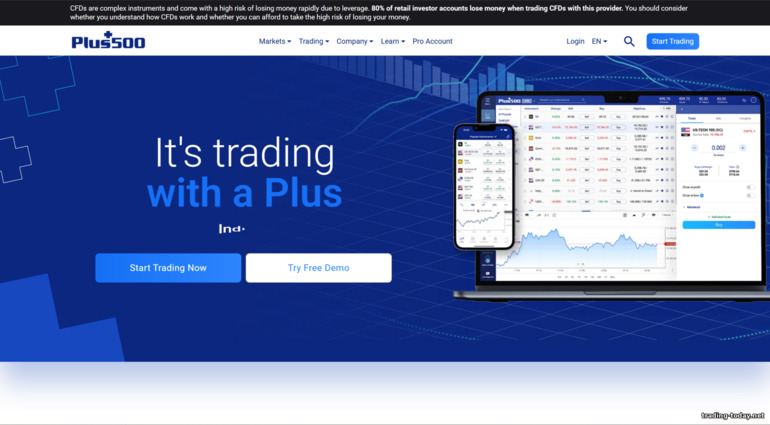
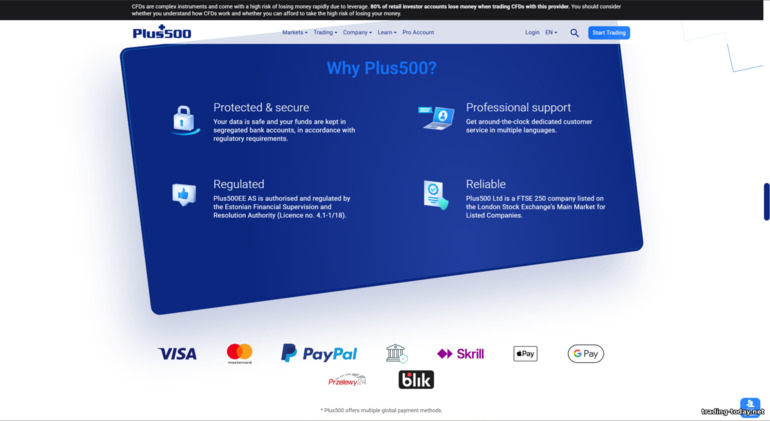
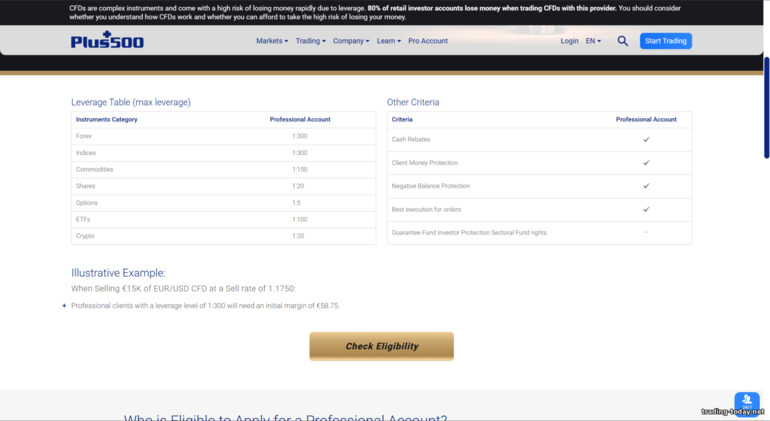
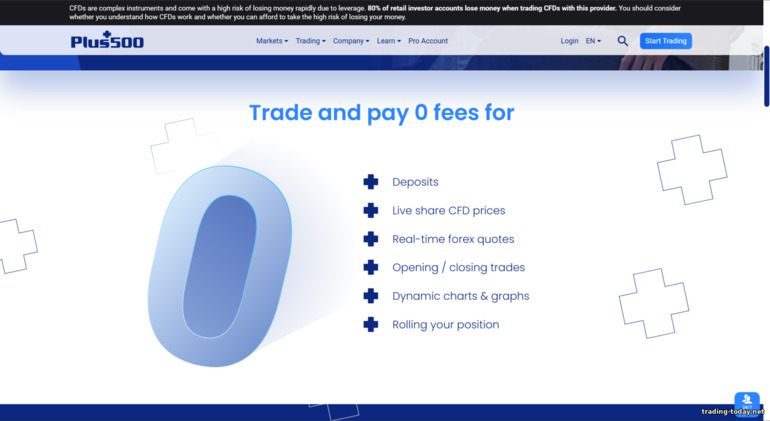

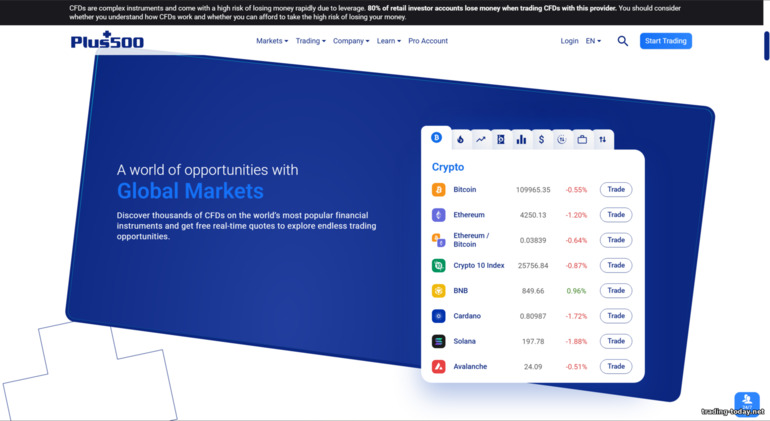
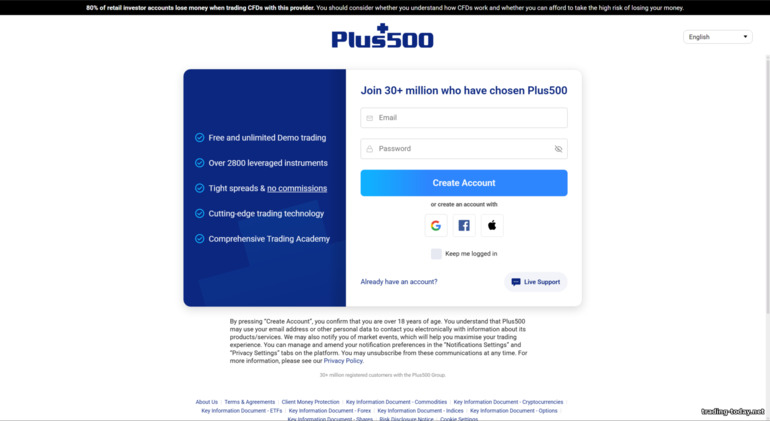

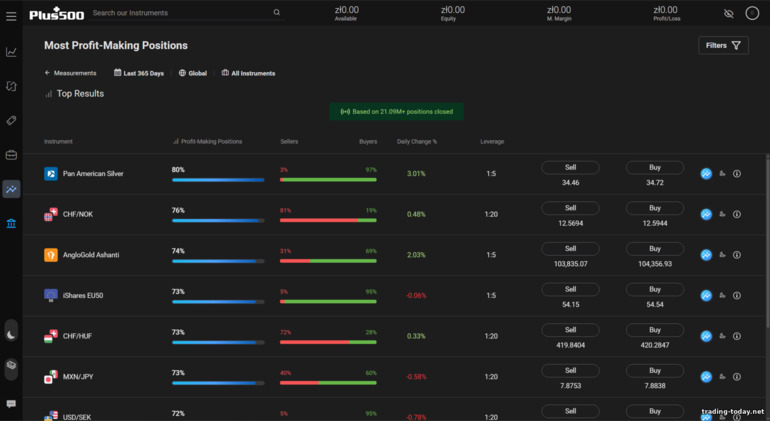



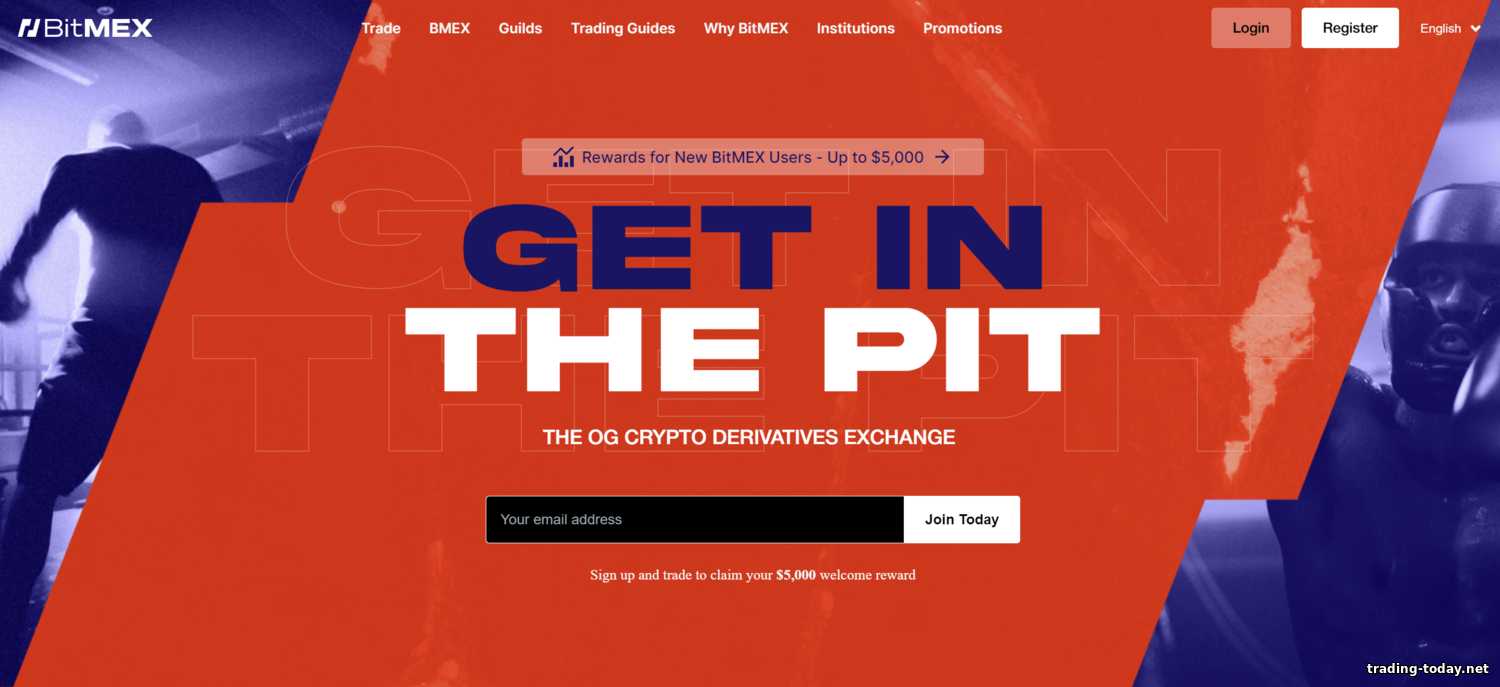




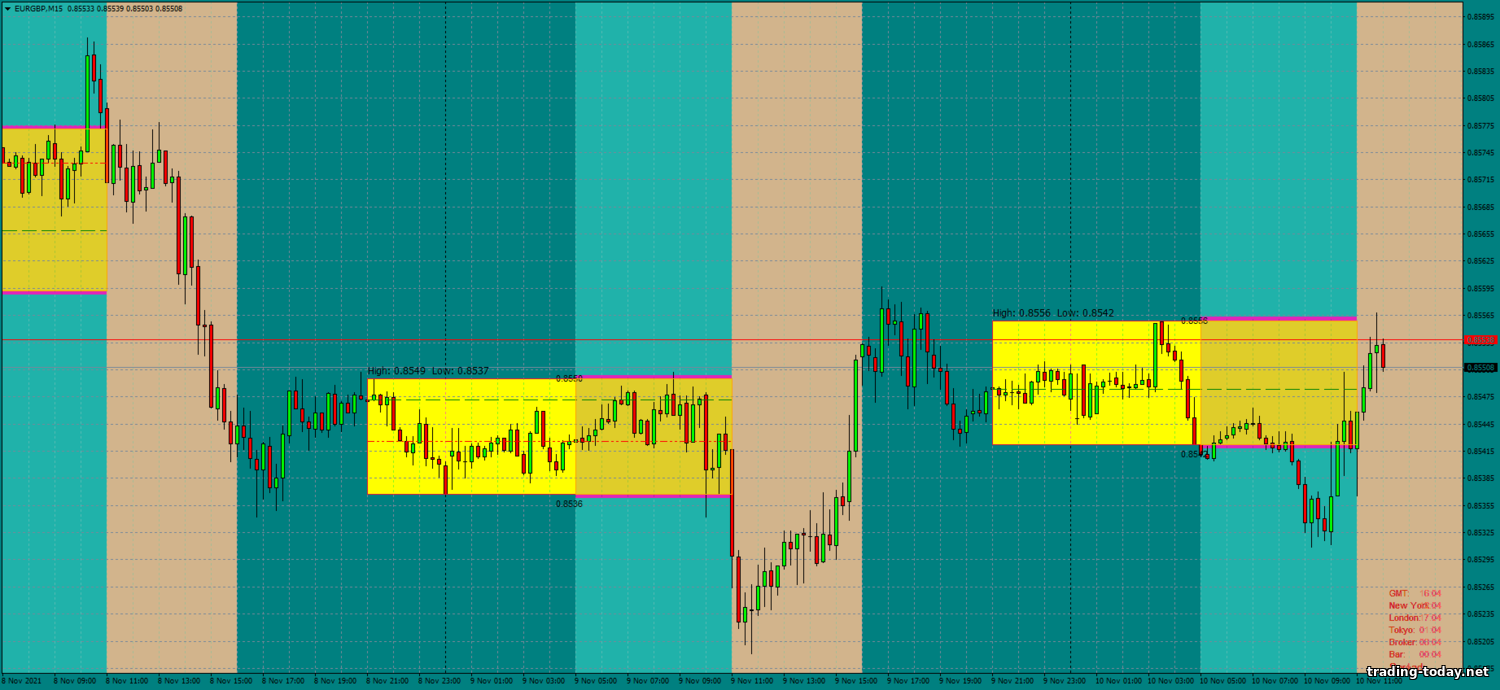
Reviews and comments